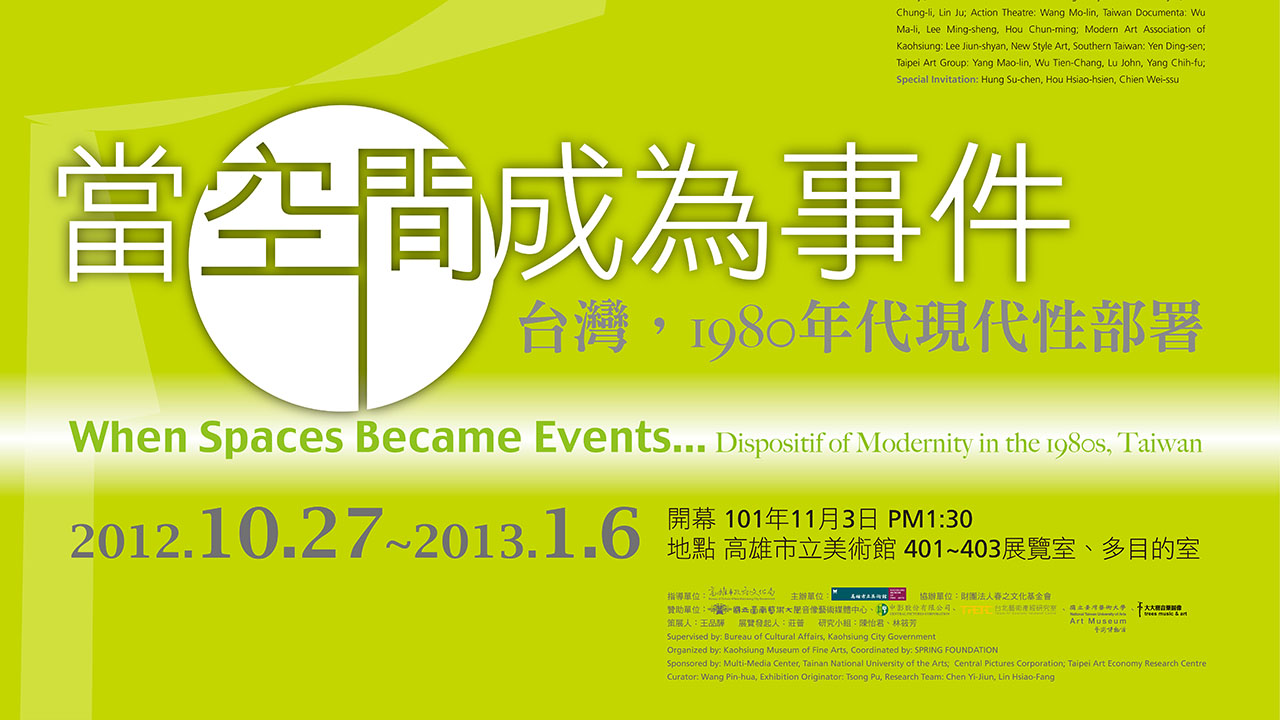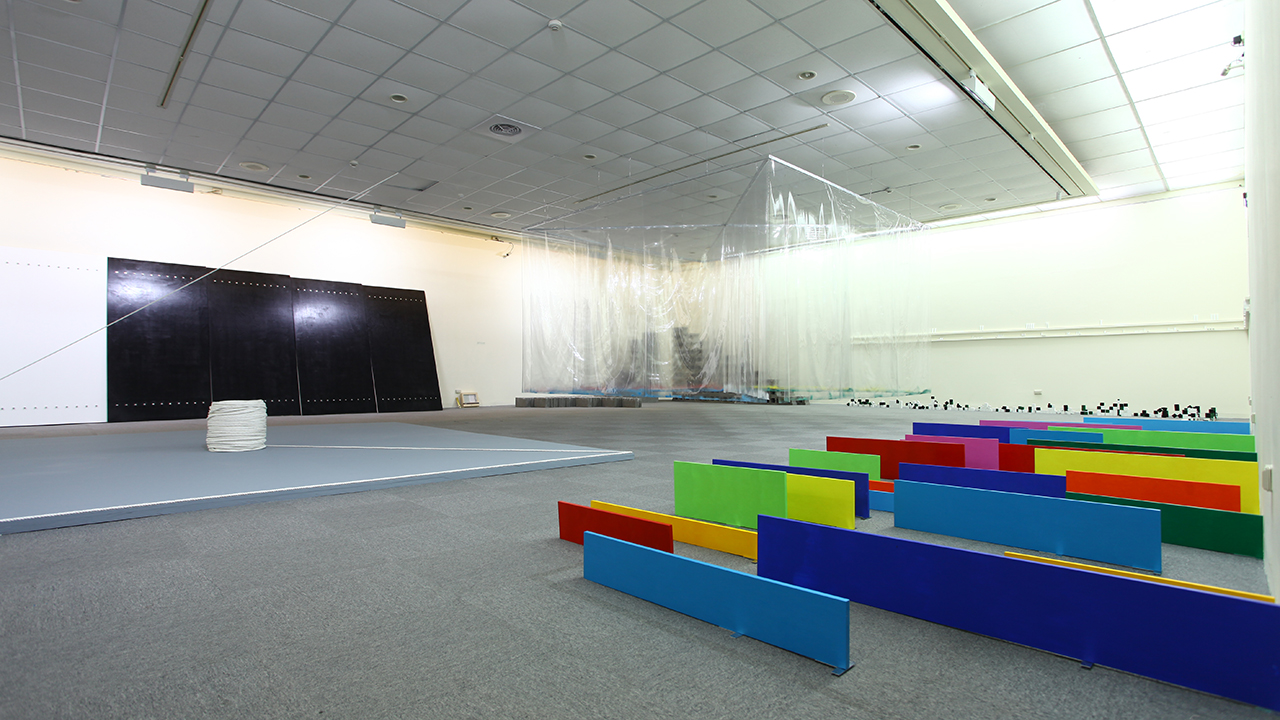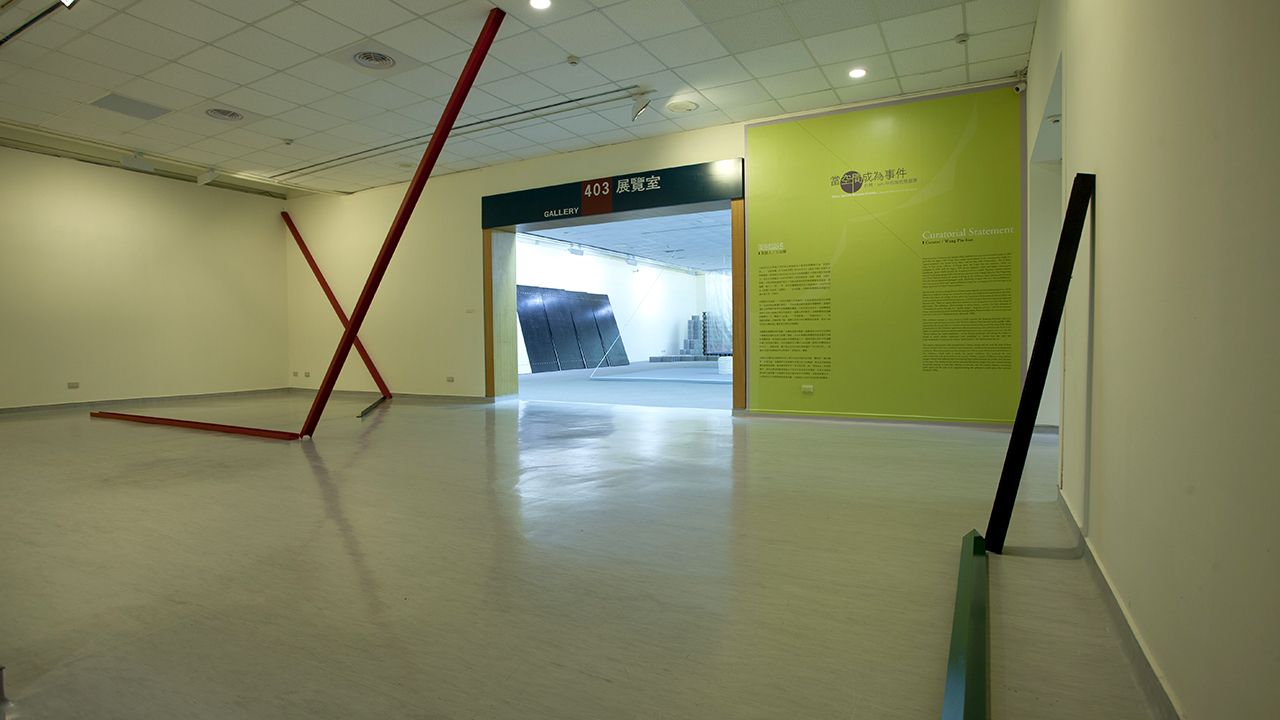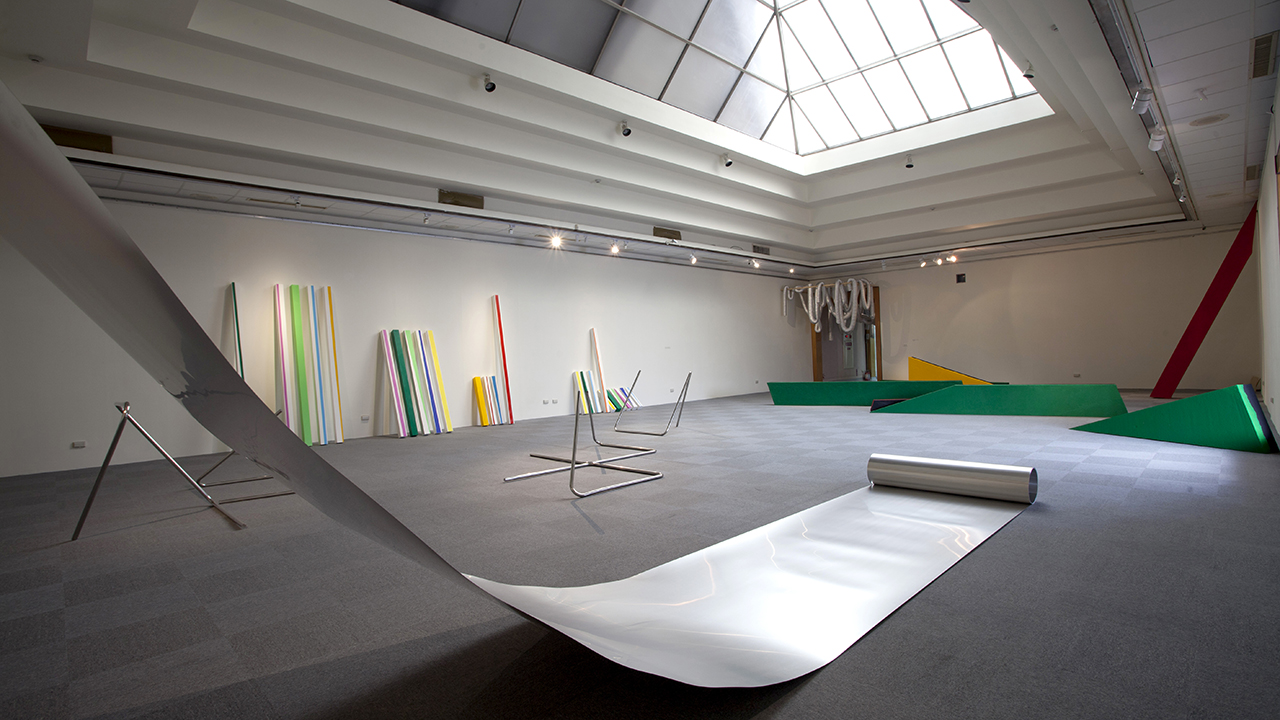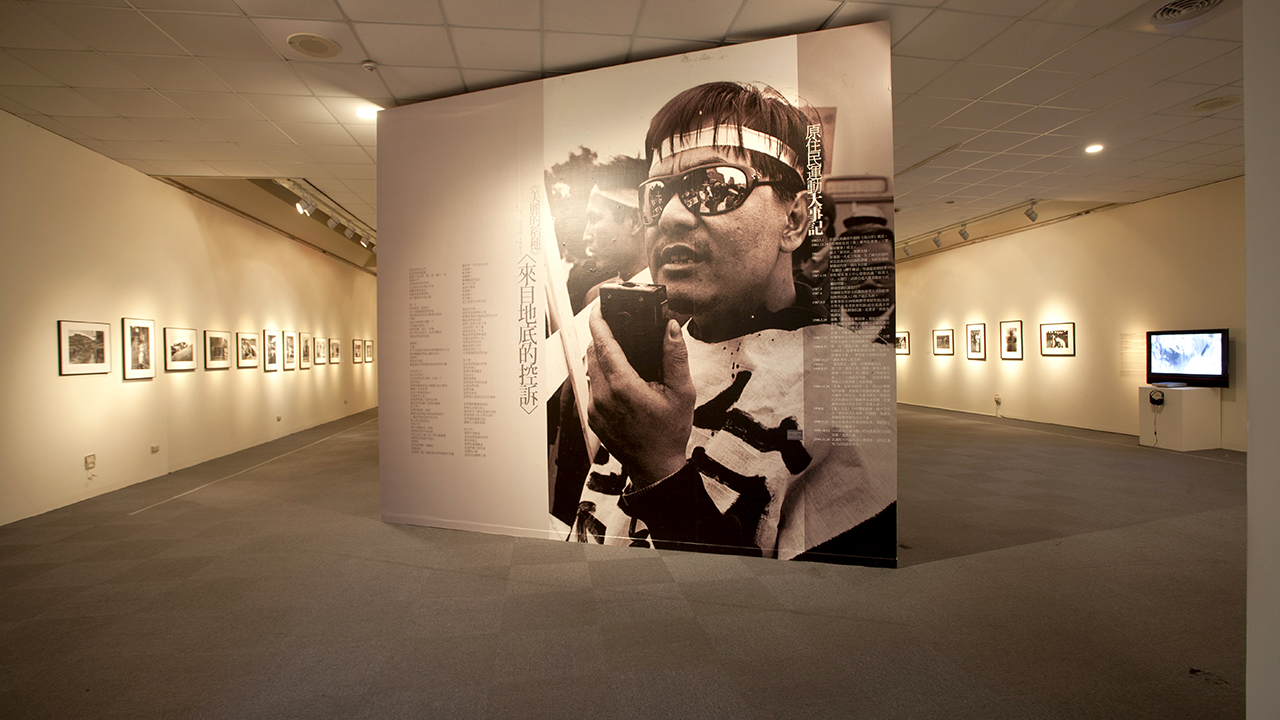Contemporary Art Exhibitions - When Spaces Became Events…
Dispositif of Modernity in the 1980s, Taiwan
Then located in a basement, the Spring Gallery displayed two experimental
spatial works in 1984 and 1985, the August 1984 Play of Space, which was
acclaimed by the contemporary media as a "spatial revolution" and "spatial
atomic blast," and the May 1985 Play of Space II. Later, in view of the
influence of Play of Space, the Taipei Fine Arts Museum, which was
established in 1983, held the August 1985 special exhibition Colors and
11
Shapes—Avant-garde, Installations, Spaces, which featured the foregoing
work as a model. However, interim museum director Su Jui-ping unexpectedly
criticized participating artists Chang Chien-fu, Hsu Yang-cong, and Chen
Chieh-jen during the course of setting up the exhibition, and a lawsuit even
occurred when the director kicked and damaged a work. Afterwards, in April
1986, the "anti-establishment" and "anti-museum of fine arts" spatial
exhibition Living Clay was displayed for the first time in an empty apartment
in Taipei's Eastern District… .

